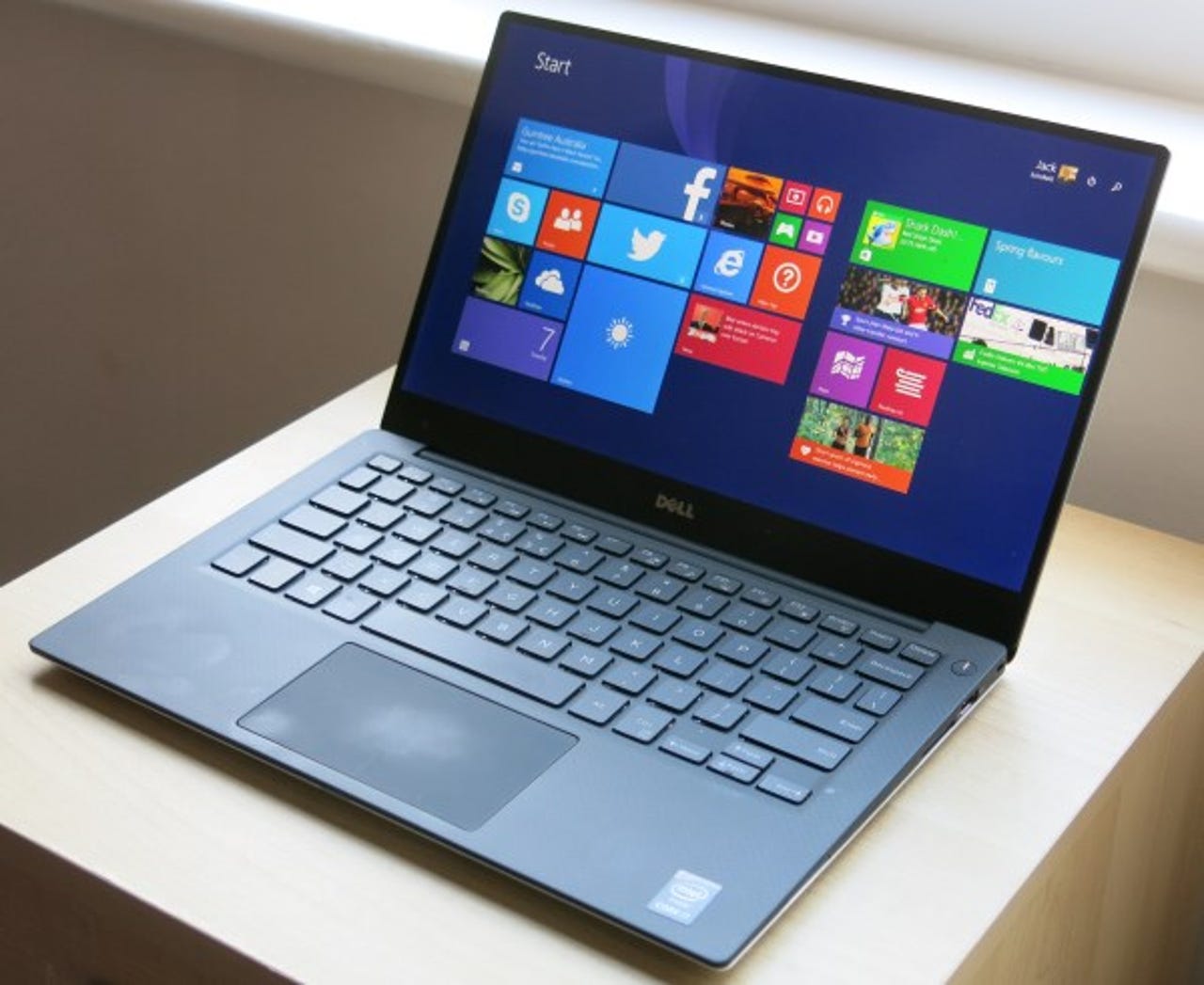Three things I learned from testing the Dell XPS 13 (2015) Ultrabook with Quad HD+ screen


First, small bezels are excellent, and more firms should use them.
When you buy an Ultrabook (or the Apple equivalent) for computing on the move, you want two incompatible things: a big screen and a small machine. The Dell XPS 13 manages to offer both, better than any other laptop I've used. And it does that, very simply, by reducing the width of the bezels so the screen almost fills the available space.
As a result, Dell has been able to fit a 13.3in screen into a chassis that's not much bigger than laptops with 11.6in screens. In fact, the dimensions of 304 x 200mm are much smaller than a 13.3in MacBook Air (325 x 227mm), and very close to the 11.6in MacBook Air (300 x 192mm).
Of course, there's a dramatic difference in screen resolution, because the 11in MacBook Air screen only offers 1366 x 768 pixels. When you open the XPS13, it's like opening an 11in MacBook Air and finding a better-than-Retina 13.3in screen inside.
The only obvious drawback is that the Dell's tiny bezel doesn't have room for a webcam, which has been relocated to the left hand side, under the screen. If you're a heavy Skype user, this is probably not the machine for you. I'm not, so I don't care.
Second, Quad HD+ screens still have more drawbacks than benefits in Windows.
The Dell XPS 13 (2015) screen is extremely bright and looks gorgeous, and it's great for watching movies. But it has no real advantages for everyday work, and at least three drawbacks: (a) all those pixels are expensive; (b) they have to be lit and moved around, which eats battery life; and (c) not all Windows programs scale correctly to 3200 x 1800 pixels. In fact, I don't expect many of my old Windows programs had ever been run at this resolution before they were launched.
The problem is that 3200 x 1800 pixels is close to 6 megapixels, whereas a typical Windows screen (1366 x 768) is only 1 megapixel. All those extra pixels are used, even if you reduce the effective resolution. This has a significant effect on battery life. Dell reckons you should get 15 hours of battery life with the 1080p screen and only 11 hours with the Quad HD+ screen.
The 2.4GHz Intel Core i7 processor with HD 5500 graphics, 8GB of memory and 256GB SSD in my loan sample made this one of the fastest laptops I've used, but switching to 1080p provided better frame rates and therefore more playable games.
Third, do you want to drive your Ferrari at 55mph?
The Dell XPS 13 (2015) makes a fantastic first impression. But after about three hours, you find the battery indicator has gone down by half. Oh dear.
When it comes to doing the day job - answering emails, filling out spreadsheets, reading and writing blog posts etc - you have a straight choice between enjoying the Dell's advantages and getting through the day without using the charger. That means scaling back the screen brightness to about half, and reining in the processor.
The XPS 13 should have good battery life, because it has a big 52-watt-hour battery and a more power-efficient 14nm Broadwell processor. And yes, it does have good battery life, with the right settings. But those settings mean you don't get to enjoy the ultra-brightness of the screen and the really fast processor you've paid for. Or at least, not all the time.
For the first time since my laptops ran MS-DOS in the 1990s, I took to switching the Dell XPS 13 off if I didn't expect to use it again soon. It booted in less than 10 seconds, which is probably quicker than most Windows 7 laptops wake from sleep, let alone from hibernation.
The XPS 13 (2015) is a great PC for "road warriors": very small, light (1.26kg), fast, backlit keyboard, good battery life. But if I were buying one, I'd go for a cheaper version with a non-touch Full HD 1920 x 1080-pixel screen and a Core i5. It's not as flashy, but it will do the business.